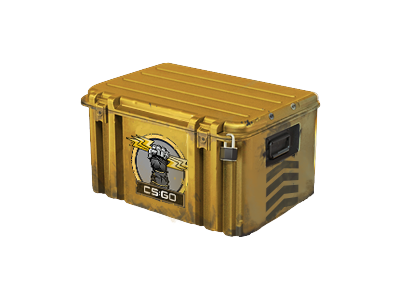Bully Tee Blog
Your go-to source for everything related to bullies and tee culture.
Cracking the Code: What Really Makes CS2 Cases Tick
Unlock the secrets behind CS2 cases! Discover what really makes them tick and how to increase your chances of winning big!
The Secrets Behind CS2 Case Algorithms: What You Need to Know
The CS2 case algorithms play a crucial role in determining the outcomes of loot boxes in Counter-Strike 2, influencing which skins players receive. Understanding these algorithms is essential for players who want to maximize their chances of obtaining rare items. The algorithm considers various factors, including player behavior, case history, and market demand, creating a complex system that ultimately dictates the randomness of case contents. Notably, players often speculate about the formulas behind these algorithms, leading to theories that seek to decode the opaque mechanics of loot distribution.
One of the most compelling aspects of the CS2 case algorithms is their adaptation based on community trends. For instance, if a particular skin becomes exceptionally popular or heavily traded, the algorithm might adjust to reflect this demand. This dynamic adjustment can create a sense of scarcity that drives up the desirability of certain items. To further understand these algorithms, gamers can analyze community forums and discussions, where players share their experiences and strategies, potentially revealing insights about how to navigate the CS2 case system more effectively.

Counter-Strike, a popular tactical first-person shooter, has captivated gamers around the world since its inception. With its latest installment, players are eagerly exploring the new features and mechanics introduced in the game. For those looking to enhance their experience, check out the CS2-Falleröffnungsseite for exciting opportunities and item cases.
Unveiling the Mystery: How CS2 Cases Determine Item Value
In the world of CS2 cases, understanding how these digital containers determine item value is crucial for players and collectors alike. Each case contains a random assortment of virtual items, which can range from weapon skins to collectibles. The value of these items is influenced not only by their rarity but also by player demand and current market trends. Collectively, CS2 cases create a dynamic marketplace where player preferences shift, fluctuating the value of various items at any given time.
To grasp the complexity of value determination, consider the following key factors that influence item worth:
- Rarity: Items from rare cases typically command higher prices.
- Market Demand: Skins that are popular among players will increase in value.
- Condition: Items in better condition fetch a premium.
By keeping these elements in mind, players can better navigate the intricacies of the CS2 cases economy and make informed decisions about their virtual inventories.
Are CS2 Case Drops Random? Understanding the Mechanics
The question of whether CS2 case drops are random is a topic that many players are keen to understand. In the world of Counter-Strike 2, case drops occur after playing matches, with players hoping to receive cases that can contain valuable skins. While it might seem like luck plays a pivotal role, there are underlying mechanics at work. The game utilizes a system that accounts for various factors, including the number of matches played, the player's level, and other in-game statistics. This means that while it may appear that the case drops are entirely random, the reality is that there is some structure involved in determining when and how often players receive these drops.
Moreover, CS2 case drops are influenced by a set of algorithms developed by the game’s creators. These algorithms ensure that players do not receive multiple case drops in quick succession, thus encouraging extended playtime. As a result, players often find themselves speculating about the timing and frequency of drops, leading to rumors and theories within the community. Players interested in maximizing their chances of receiving cases should focus on increasing their playtime and participating in various game modes, as these can contribute to a more favorable drop rate. In conclusion, while CS2 case drops may seem random at first glance, they are governed by specific mechanics designed to enhance player engagement.